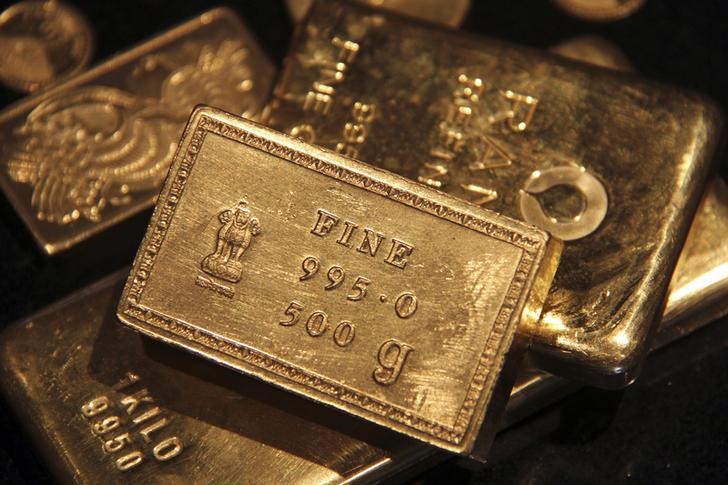Investing.com -- Gold prices slipped slightly in New York on Friday after the third reading of U.S. gross domestic product for the third quarter showed consumer spending was stronger than initially thought.
Real consumer spending grew at an annualized rate of 3.2% in the three months through September, rather than the 2.9% reported in the previous reading. The headline rate of economic growth was also nudged up a tick to 2.1% from 2.0%.
A little later, the University of Michigan also revised its consumer sentiment index up a tick to 99.3. That barometer of consumer feelings has now effectively returned to where it was before President Donald Trump ratcheted up the trade war with China in August.
The figures as such do little to change market perceptions that the Federal Reserve will remain on hold with U.S. interest rates until well into next year.
By 10:27 AM ET (1527 GMT), gold futures for delivery on the Comex exchange were at $1,483.55 a troy ounce, down 0.1% from Thursday. Spot gold was flat at $1,479.80.
Silver futures were firmer, rising 0.6% to $17.26, while platinum futures fell 1.0% to $926.50 an ounce.
Gold has been effectively trading sideways since the start of November as the worst fears for global trade have eased, even though uncertainty has remained high.
Juan Carlos Artigas, director of investment research at the World Gold Council, said returns next year should remain solid, given that real interest rates in much of the world are still either negative or historically very low.
“When real rates have been negative, gold has historically returned twice as much annually as the long-term average, or 15.3%,” Artigas said in a research note. “Even low positive real rates produce higher average returns. Effectively, it has only been in periods with significantly higher real interest rates – an unlikely outcome given the current market conditions – that gold returns have been negative.”
Market expect the Fed to cut at least one more time next year, while the European Central Bank has given no indication that it will raise its key rate from the current -0.5% for the foreseeable future. The Bank of Japan also this week signalled no imminent change was likely to its key rate, which is stuck at -0.1%.
